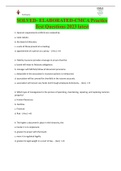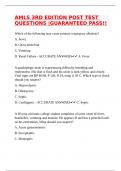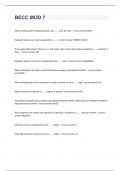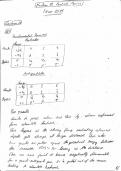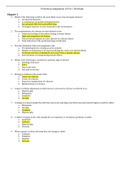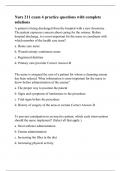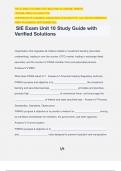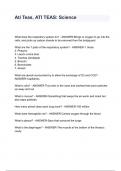Power Systems 2
(ENEL4WA)
Assignment 2 – Over Current Protection Using
Instantaneous Overcurrent Relay
NOTE// IF YOU NEED SIMULATION FILE EMAIL ME
AT:
,Abstract
Relays are employed in a power system network to ensure that the system operates safely, reliably,
and conveniently. The Over-Current relay is commonly utilized in the power system to prevent
against short circuits and incorrect system settings. In the power system, an incorrectly set Over-
Current relay makes it harder to send the trip signal. As a result, it must be carefully linked in the
power system. As a result, it is critical to certify the installation of power protection equipment. The
operation of over-current relays, such as instantaneous over-current relays, definite time over-current
relays, and inverted definite time over-current relays, is described in this work. A power system
network was modelled using the Matlab/Simulink package to quantify the performance of over-
current relays using the instantaneous over-current relay. A three-phase 132 kV at 50 Hz source, a
132/11 kV step down transformer, and a single parallel RLC load with active and reactive power of
50 MW and 25 Mvar respectively made up the power system network. The Matlab/Simulink package
was used to create the relay block, which had a current setting of 125 percent, a CT of 400/5, a pickup
current of 6.25 A, and a time multiplier setting of 0.6. A second RLC parallel load was connected to
the network to quantify the relay's performance. The load's active and reactive power were set to 0.3
kW and 0.3 kVar, respectively, and the measured output current was 5.18 A, which was below the
pickup current and the relay did not send a trip signal to the circuit breaker. Another parallel RLC
load was connected to the network, with the active and reactive power of the first two loads set to 50
kW and 20 kVar, respectively, and the third load's active and reactive power set to 50 MW and 20
Mvar. The output current was measured at 69.5 kA, which is significantly higher than the pickup
current, thus the relay detected the problem and sent a trip signal to the circuit breaker.
Page | i
, Table of Contents
Abstract..................................................................................................................................................i
Table of figures.....................................................................................................................................iii
Nomenclature........................................................................................................................................v
1. Introduction.......................................................................................................................................1
2. Theoretical Background.....................................................................................................................2
2.1. Fault and its clarification.............................................................................................................2
2.1.1. Symmetrical faults...............................................................................................................2
2.1.2. Unsymmetrical faults...........................................................................................................2
2.2. Requirements of a protection system.........................................................................................2
2.2.1. Reliability.............................................................................................................................2
2.2.2. Selectivity.............................................................................................................................2
2.2.3. Sensitivity.............................................................................................................................2
2.2.4. Speed...................................................................................................................................3
2.2.5. Simplicity..............................................................................................................................3
2.2.6. Economy..............................................................................................................................3
2.3. Protection using relay.................................................................................................................3
2.4. Overcurrent Relay.......................................................................................................................3
2.5. Types of overcurrent relays........................................................................................................4
2.5.1. Instantaneous Overcurrent Relay........................................................................................4
2.5.2. Definite Time Overcurrent Relay..........................................................................................4
2.5.3. Inverse Definite Minimum Time (IDMT) Overcurrent Relay.................................................5
3. Simulations........................................................................................................................................6
3.1. Part 1 – Source, transformer and load voltage and current measurements...............................6
3.1.1. Source..................................................................................................................................7
3.1.2. Transformer.........................................................................................................................8
3.1.3. Load...................................................................................................................................10
3.2. Part 2 - Instantaneous relay block diagram...............................................................................11
3.3. Part 3 – Connecting 2nd load with no over current condition....................................................14
3.4. Part 4- Connecting 3rd load with over-current condition...........................................................15
4. Results discussion and analysis........................................................................................................17
4.1. Part 1 - Source, transformer and load voltage and current measurements..............................17
4.1.1. Source................................................................................................................................17
Page | ii

